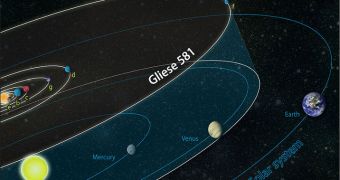Scientists with the Kepler mission say that the telescope was recently able to identify a series of events known as stellar oscillations (or, more commonly, starquakes), taking place of stars close to the Sun.
The detection was announces yesterday, October 26, by the consortium operating NASA's planet-finder telescope. Kepler has been developed specifically to discover Earth-sized exoplanets around distant stars, and thus far it observed thousands of stars to get the job done.
Speaking at a news conference in Denmark, held at the Aarhus University, researchers with the Kepler team revealed that the telescope has thus far beamed back data on thousands of stars in our surroundings, some of which have exoplanets in their orbit.
The experts, all with the Kepler Asteroseismic Science Consortium (KASC), said at the conference that they had compiled a list of the most well-studied stars the astronomical community ever looked at.
Their detection of stellar oscillations on the surface of such cosmic bodies helped the group gain additional insight into the age, size and evolution of stars throughout the Universe.
Studying this peculiar cosmic phenomenon is very much like probing the surface of the Earth for understanding earthquakes. This field of research is called astroseismology when it deals with tremors that develop on the surface of stars.
“Using the unparalleled data provided by Kepler, KASC scientists are quite literally revolutionizing our understanding of stars and their structures,” explains NASA Kepler program scientist Douglas Hudgins.
“What's more, they are doing so at no cost to the American taxpayer,” adds the expert, who is based at the agency's Headquarters, in Washington DC.
“All the KASC scientists are supported by research funding from their home countries. It is a perfect illustration of the tremendous value that our international partners bring to NASA missions,” he says.
At the recent meeting, the KASC team presented one of the most well-characterized stars in the Kepler field, called KIC 11026764. This space object has the most accurately known properties of any star that the telescope ever looked at.
At this point, the object is roughly twice larger in diameter from the Sun, given that it has reached the venerable age of 5.94 billion years. It is currently turning into a red giant.
The exact same faith awaits our Sun as well. It will turn into a red giant at first, and will then collapse into a white dwarf, that will continue to burn its helium reserve for many years.
At the meeting, investigators showed that the new Kepler technologies allowed them to determine for example that the star has a helium-rick core, and that nuclear fusion only takes place in a thin layer in the distant star's atmosphere.
“We are just about to enter a new area in stellar astrophysics. Kepler provides us with data of such good quality that they will change our view of how stars work in detail,” adds Universities of British Columbia and Vienna postdoctoral fellow Thomas Kallinger, who was the lead author of the work.
“Kepler data ultimately will give us a better understanding of the future of our sun and the evolution of our galaxy as a whole,” adds the leader of another study, expert Daniel Huber.

 14 DAY TRIAL //
14 DAY TRIAL //